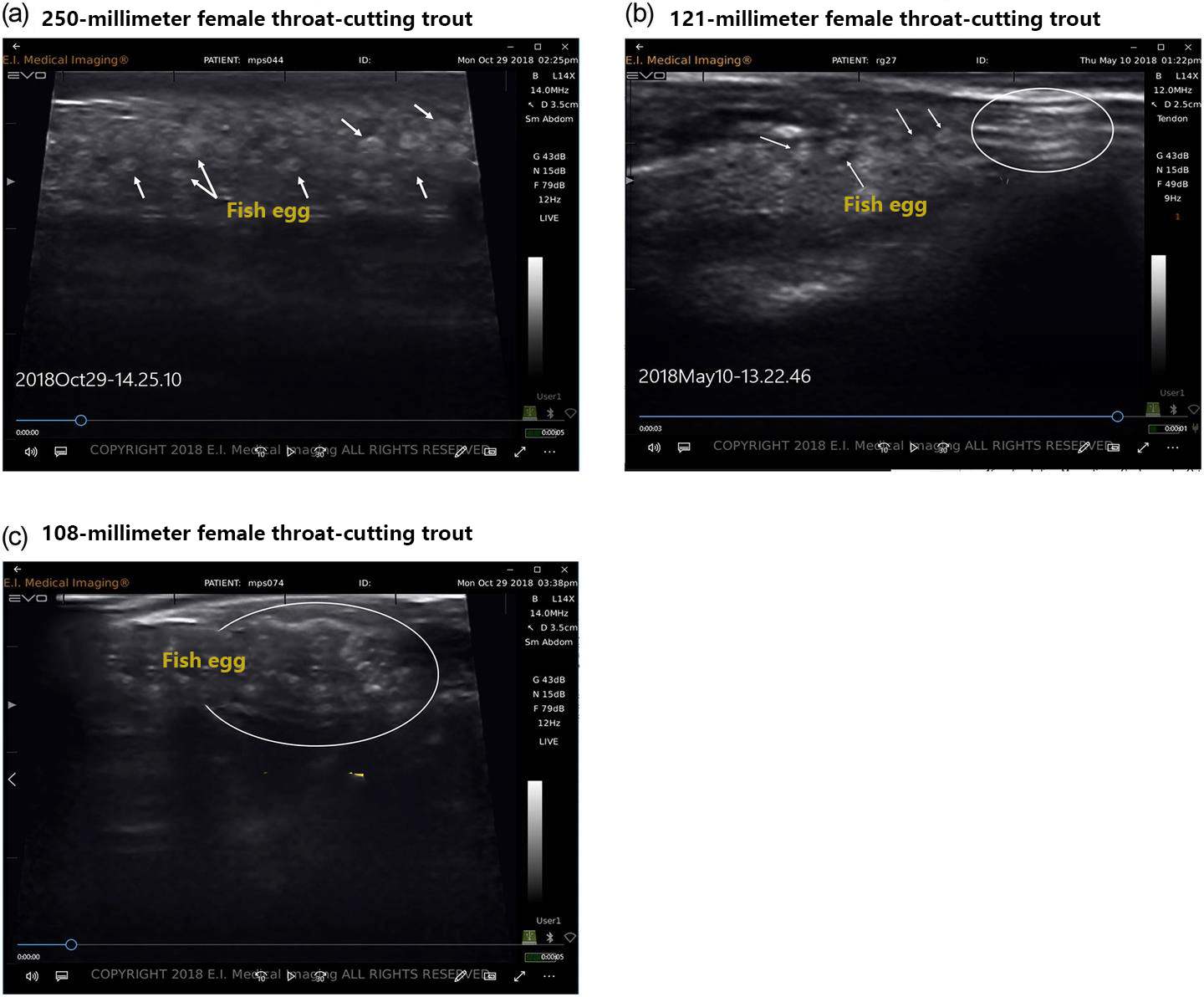Ultrasound technology has revolutionized aquaculture management by enabling non-invasive, rapid, and accurate sex determination and gonadal maturity assessment in fish. This article explores the principles, methodologies, and real-world applications of fish ultrasound (fish ultrasound, ultrasound fish) in Australia, the UK, and New Zealand, highlighting its transformative role in sustainable aquaculture.
The gender and gonad maturity of wild and farmed fish directly affect the population structure, reproductive efficiency and industrial economic benefits. The traditional methods for evaluating gonadal maturity include anatomical observation, gonadal index (GSI) determination, hormone level detection, etc. Although accurate, they have the drawbacks of being highly invasive, time-consuming and labor-intensive, and difficult to recycle. Ultrasound imaging technology can conduct real-time scanning of fish bodies in water or outside water. By analyzing the echo characteristics of tissues, it realizes the visualization of gonadal morphology and hemodynamics, becoming an important non-invasive monitoring tool.
1. Principles of Fish Ultrasound Technology
Fish ultrasound devices emit high-frequency sound waves to visualize internal organs, including gonads. Distinct tissue densities between ovaries (containing developing oocytes) and testes (homogeneous tubular structures) generate unique echogenic patterns 16. For example:
Female fish: Ovaries appear as clusters of small, hypoechoic (dark) spherical structures due to fluid-filled oocytes.
Male fish: Testes display uniform hyperechoic (bright) patterns with compact, symmetrical morphology.
Advanced AI-driven systems now automate image analysis, achieving >97% accuracy in sex identification within 0.03 seconds 5.
2. Operational Workflow for Gonadal Assessment
Step 1: Fish Preparation
Sedate fish to minimize stress and stabilize positioning.
Apply water-soluble gel to the ventral area to enhance ultrasound coupling.
Step 2: Scanning Protocol
Position the transducer parallel to the lateral line, posterior to the operculum, to capture cross-sectional views of the abdominal cavity 213.
Identify key landmarks:
Stomach: Serves as a reference point for locating gonads.
Ovaries: Mature ovaries fill the peritoneal cavity (e.g., in salmonids) or cluster dorsoventrally near the stomach (e.g., in smaller species like tilapia).
Testes: Located adjacent to the swim bladder, exhibiting homogeneous texture.
Step 3: Maturity Grading
Morphological criteria: Oocyte diameter (>50 μm indicates readiness for spawning), gonadosomatic index (GSI = gonad weight/body weight × 100%) 13.
Molecular biomarkers: qPCR analysis of CYP19A1 (aromatase) and Vtg (vitellogenin) expression levels to validate ultrasound findings
3.The application of fish ultrasonic machines in aquaculture
Hydrops: Ultrasound is highly correlated with GSI and hormone levels. Mature individuals can be rapidly identified through the F3 and M3/M4 thresholds, reducing the frequency of frequent operations.
Nile tilapia: Ultrasound identification accuracy reached 95%, significantly better than manual visual sorting (87%), but still challenging for testis imaging of individuals smaller than 400 g.
Atlantic salmon: The application of ultrasound in the maturation monitoring of wild and farmed male salmon reduces the number of unnecessary sacrifices and has wide promotion value.
Chinese sturgeon: By combining ultrasound images with sex hormone determination, the gender and maturity of individuals aged 10 to 17 were classified, verifying the application potential of ultrasound in the protection of rare fish species.
Male and female reversed rainbow trout: Research has confirmed the high efficiency of ultrasound in the assessment of gonad structure in male and female reversed individuals, which is helpful for breeding single male and female resources.
Ultrasound imaging has demonstrated high accuracy and repeatability in the identification of gonadal maturity and gender in fish, but its application is still affected by the following factors:
4. Global Research and Applications
Australia
Australian researchers have pioneered portable ultrasound systems for barramundi (Lates calcarifer) farming. By correlating ovarian echotexture with plasma estradiol levels, they achieve 95% accuracy in predicting spawning windows, optimizing hatchery schedules 13.
United Kingdom
The UK’s University of Stirling integrates machine learning with ultrasound imaging to monitor Atlantic salmon (Salmo salar) maturation. Their AI models predict sex and maturity stages using real-time B-mode images, reducing manual labor by 70% 5.
New Zealand
In New Zealand, ultrasound-guided selective breeding of king salmon (Oncorhynchus tshawytscha) has improved female-to-male ratios in hatcheries. Farmers use handheld devices to identify “high-value” females early, enhancing caviar production efficiency 6.
4. Advantages Over Traditional Methods
Non-invasiveness: Eliminates stress and mortality risks associated with surgical sexing 1.
Cost-effectiveness: Reduces labor costs by 50% compared to manual gonadal biopsy 5.
Scalability: Suitable for both small-scale farms (e.g., UK trout farms) and industrial operations (e.g., Australian tuna ranches).
5. Challenges and Future Directions
Species-specific calibration: Gonadal echogenicity varies between taxa (e.g., catfish vs. carp), requiring tailored imaging protocols.
Automation: Emerging platforms like GreenFox’s AI-powered sorting machines promise to process 3,500 fish/hour with 99% accuracy, aligning with Industry 4.0 trends 5.
Climate adaptation: Researchers in New Zealand are developing thermal-stress resilience models using ultrasound-monitored gonadal development data.
Conclusion
Fish ultrasound technology (fish ultrasound, ultrasound fish) is reshaping global aquaculture by enabling precision management of reproductive cycles. With ongoing innovations in AI and portable imaging, nations like Australia, the UK, and New Zealand are leading the transition toward data-driven, sustainable fish farming.
Post time: Jun-20-2025




